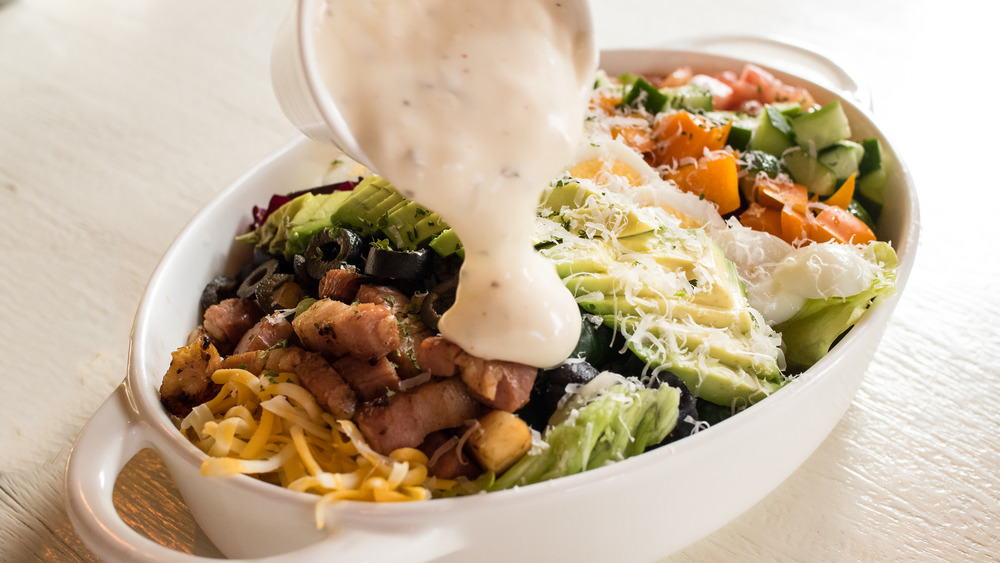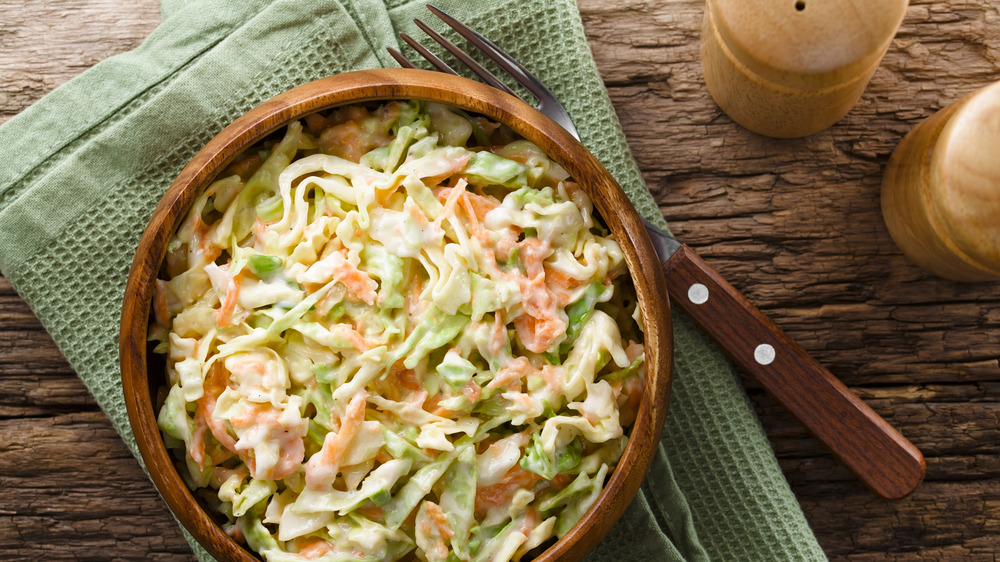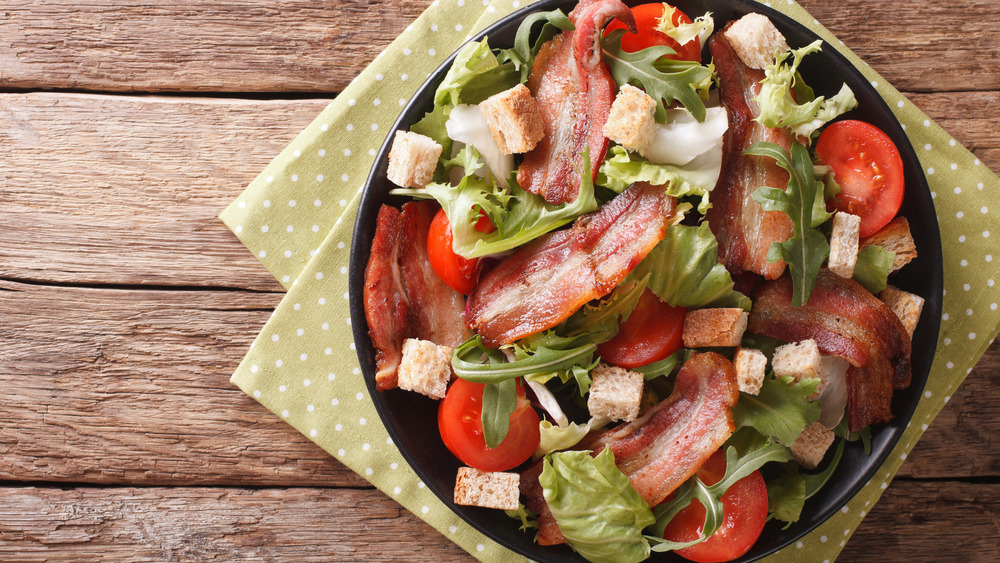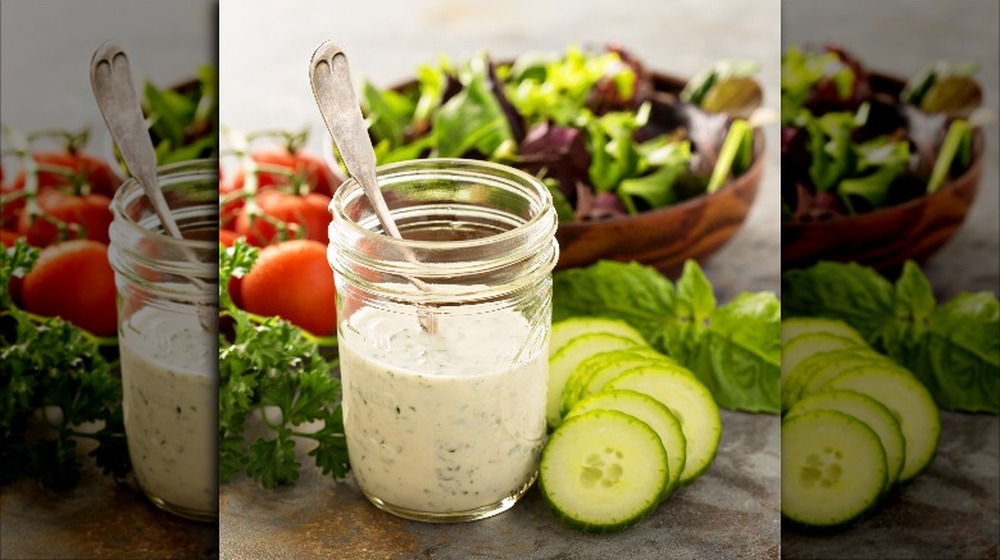Everything You're Doing Wrong When Eating Salad
When asked to name a healthy dish, one that is diet-friendly and much better for you than a meal of meat and potatoes (if not nearly as satisfying), many people would immediately answer with salad. In fact, how often have you heard someone say (or even said yourself), "Oops, guess I shouldn't have eaten that entire pizza at lunch, but it's ok, I'll make up for it by having just a salad at dinner."
As FMS-certified trainer and ISSA-certified nutritionist Jamie Hickey would be sure to tell you, there is just so much wrong with that statement. Leaving aside any judgmental remarks about the pizza, Hickey, the founder of Truism Fitness, takes issue with the idea that salad is necessarily all that healthy. He is concerned with such "nutritional based myths" as this, the ones, he says, "that sway people to avoid food when they shouldn't or trick people into thinking they're eating healthy." First off, when it comes to the idea of salad as a low-fat food and therefore desirable, he says that "in reality, a proper diet must include healthy fats." What's more, he also takes issue with "people that think a salad of any kind is healthy."
You're ordering restaurant salads
According to Hickey, "A healthy salad will consist of leafy greens, tossed with tomatoes, peppers, onions, carrots, and topped with a homemade dressing made out of olive oil or balsamic vinegar." He goes on to say, though, that "unfortunately we have started to think of anything that is tossed together in a bowl with a dressing thrown over it as a salad." As to why we should think such a thing, perhaps it's due to what we see at restaurants. Hickey explains, "The vast majority of salads that you see at restaurants are a bunch of meats, cheeses, and heavy fatty dressings mixed together to make a dish that has more calories in it than most fast food sandwiches."
Case in point: Jack in the Box's Chicken Club Salad which, if you get it with crispy chicken, ranch dressing, and croutons, weighs in at 820 calories. For a calorie budget this size, you could have almost five of that chain's weird-but-cheap tacos or even the Double Chili Cheeseburger.
You're adding the wrong stuff to your homemade salads
If you stick to making your salads at home, you may be doing your budget a favor, but you could still be hurting your diet if you're doing it the wrong way. Hickey says that many times "people will start off with the right base of ingredients," but then they'll mess things up by "add[ing] fried chicken, bacon, or noodles and unhealthy dressing." He states that in order to keep your salads healthy, "You need to avoid any type of protein that is crispy or fried. Instead add grilled chicken, fish, or shrimp to it."
It's not only the meats but the other add-ins that you need to watch out for, too. Hickey also warns, "Do not include any cheese, bacon, tortilla chips, fried noodles, sour cream, croutons, or dressings that aren't made from an oil base." He goes on to explain that these are the ingredients responsible for putting salads close to or over 1,000 calories.
You're choosing the wrong dressing
The dressing, in fact, may be the most dangerous part of your salad. Hickey says, "A bad choice of dressing will kill the nutritional value of a salad quicker than any other ingredient." According to him, creamy salad dressings have, on average, 75 calories per tablespoon. But how many tablespoons do you typically use? If you use the same amount on your salads at home as you'd typically get in a restaurant, Hickey warns that you could be dousing your salad with four to six tablespoons for a calorie count in the 300 to 450 range. He advises, when you're ordering out, "Get your dressing on the side so that you can add it sparingly," and also suggests choosing lighter vinaigrettes over heavier cream-based dressings.
One caveat, though: don't opt for an entirely fat-free dressing unless your salad has an additional source of healthy fat such as nuts, seeds, avocado, or cheese. While you don't want a high-fat salad, WebMD details a study showing that the nutrients in raw vegetables can only be fully absorbed if consumed along with at least six grams of added fat. As Wendy White, a former Iowa State University associate professor of food science and nutrition, said in a press release when the study's findings were announced, "Our findings are actually consistent with U.S. dietary guidelines, which support a moderate diet, rather than one very low in fat." Good news, indeed, for anyone who wants a side of flavor along with that pile of lettuce.



